The history of Ancient Rome is a fascinating tale of conquest, expansion, innovation, and culture. Founded in 753 BC as a small settlement along the Tiber River, Rome gradually evolved into one of the most powerful empires in history. This empire was not merely a political entity; it was a tapestry woven from diverse cultures, languages, and traditions.
The rise and fall of the Roman Empire spanned over a millennium and has left an indelible mark on the world, shaping politics, culture, and society in ways that continue to resonate today. The Romans were not merely builders; they were innovators who transformed the architectural landscape of their time. Their structures were not only functional but also served as a testament to their power and cultural identity, evident in the masterpieces of Roman architecture.
Moreover, the Roman roads, which are often referred to as the backbone of the empire, played a crucial role in maintaining and expanding its reach. However, it’s essential to remember that this grand empire was also home to plebeians, the common people whose lives were vital to the fabric of Roman society. They represented the majority and significantly influenced the development of political and economic structures in ancient Rome.
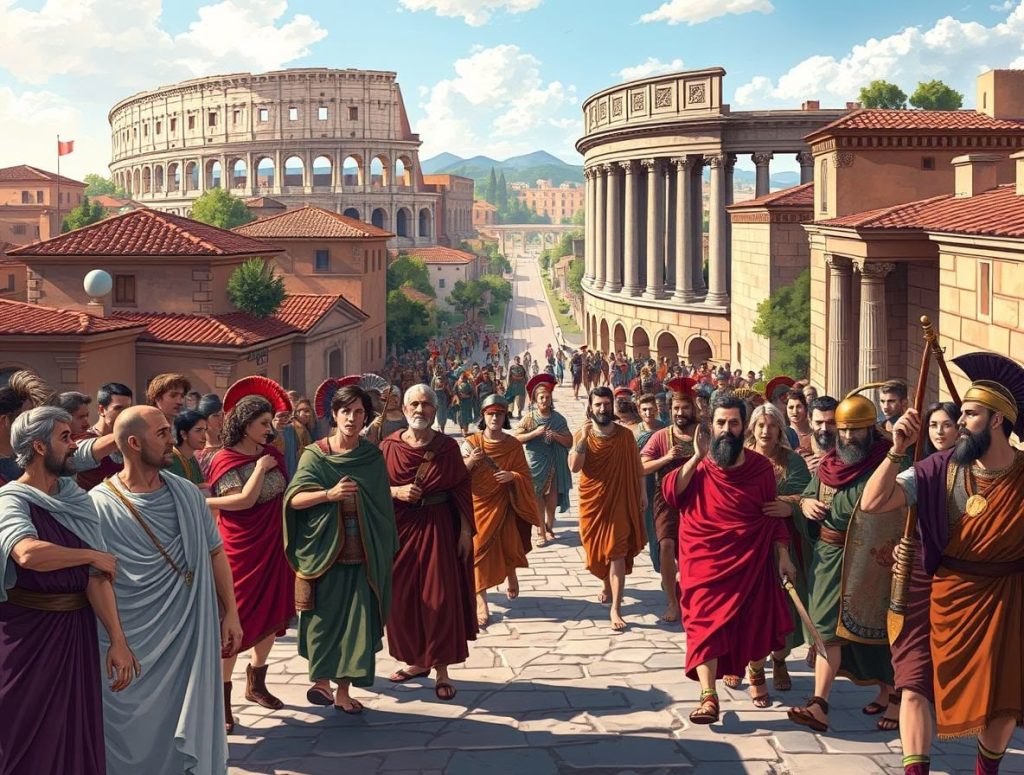
The Structure of Roman Names: The Tria Nomina System
Roman male citizens traditionally bore a three-part name system known as the tria nomina. This structure consisted of:
- Praenomen: The personal or given name, selected at birth. It was used mainly within the family or among close friends. Examples include Gaius, Lucius, and Marcus. The praenomen was relatively limited in variety and commonly appeared in abbreviated forms like C., L., or M.
- Nomen: Also called the nomen gentilicium, this element identified the gens, or clan, to which an individual belonged. It functioned as a hereditary surname indicating broader family lineage and social identity. Nomen often ended with suffixes like -ius (e.g., Julius, Tullius), signaling membership in a distinguished Roman family.
- Cognomen: Initially a nickname or descriptive term, the cognomen evolved to distinguish different branches within a clan or to highlight personal traits. Over time, cognomina became hereditary and increasingly significant during the Empire period, sometimes expanding into multiple surnames.
These three components combined to form a full Roman male citizen’s formal name, serving not only as identifiers but also as markers of ancestry and social rank. The tria nomina conveyed one’s place within intricate family networks and Roman society’s hierarchical structure. In daily life, usage might vary—from all three names in official contexts to just praenomen and nomen in informal settings—depending on social circumstances and familiarity.
The influence of these names extended beyond mere identification. For instance, exploring the ancient Roman religion reveals how intertwined these names were with religious practices that influenced politics, culture, and social structures. Furthermore, understanding the structure of power during the Roman Republic provides insight into how these names played a role in the complex political landscape of that era.
Interestingly, despite their significant influence during the Republic, the Romans were notably reluctant to have a king, even when they effectively had one in all but name. This reluctance is deeply rooted in their historical experiences and societal values.
In contemporary times, such as in role-playing games like Second Life, individuals can immerse themselves in virtual worlds like Romanum, where they can embody characters with these historical names and explore their significance further. Historical figures such as Scipio Africanus, who changed the course of history during the Second Punic War, serve as reminders of the weight these names carried in terms of legacy and influence.
The ancient Roman civilization, with its rich tapestry of history, culture, and societal structures, continues to influence modern society in numerous ways. One of the most notable aspects is the influence of Roman mythology on modern culture, which has left an indelible mark on literature, art, and even language.
Another intriguing facet of Roman society was the role of gladiators. These individuals were not just mere entertainers; they were heroes or victims of Roman entertainment who faced life-and-death situations in the arena. Their stories reflect the complex social system that existed in ancient Rome.
The political landscape of Rome also underwent significant changes over time. The transition from a monarchy to a republican system marked the birth of the Roman Republic, a pivotal moment that reshaped governance not only in Rome but also set a precedent for modern political structures.
Art and culture flourished during the Roman era, as seen in their remarkable sculptures and mosaics. This artistic expression is a testament to the ingenuity and creativity of ancient Rome, heavily influenced by earlier Greek and Etruscan traditions.
Lastly, the societal structure of ancient Rome was largely influenced by the patricians, who were masters of Roman luxury and power. They were distinct from the working-class plebeians and usually rich landowners who held significant sway over political and economic matters.
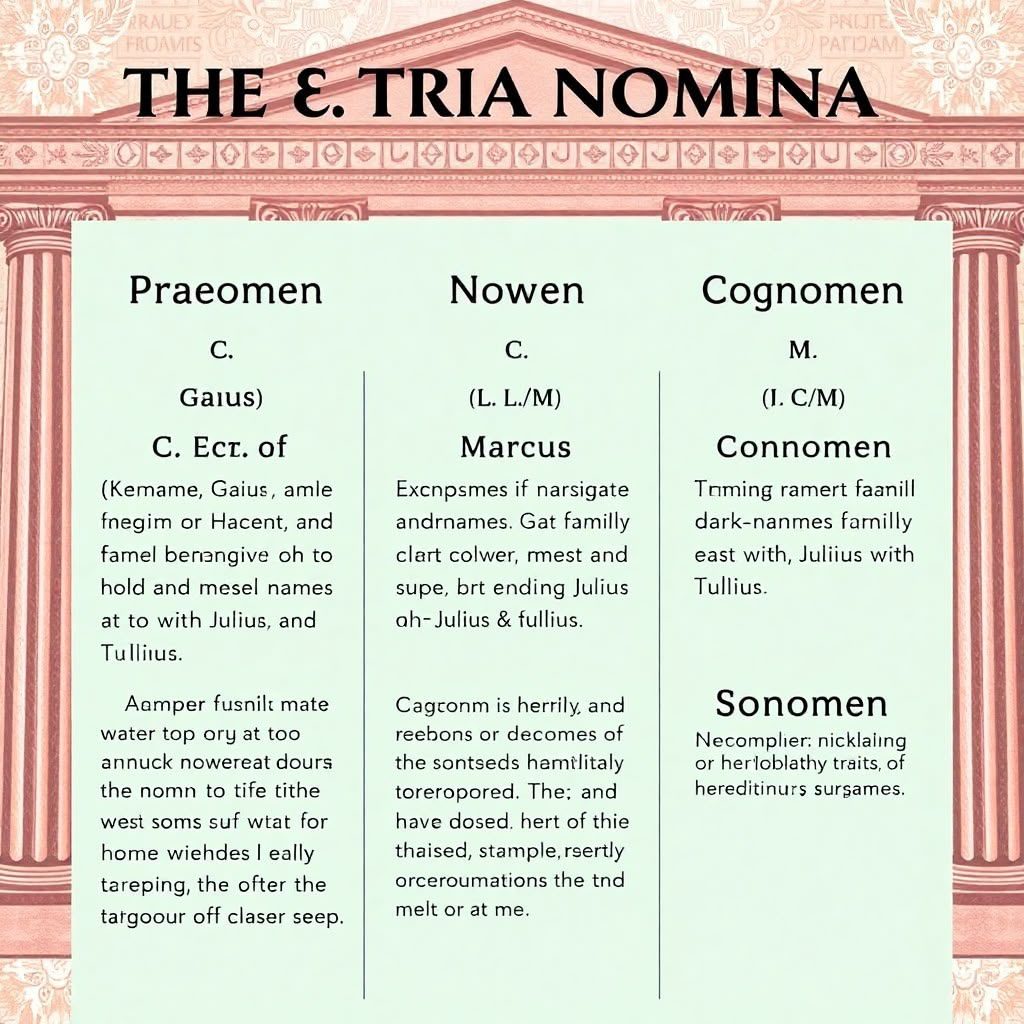
Special Cases in Roman Naming Practices
Roman naming conventions included unique adaptations for certain social situations that reveal much about identity and status.
1. Adopted Sons Names
When a boy was adopted, he took the full name of his adoptive father. To maintain a connection to his original family, an adjectival form of his birth family’s cognomen was added as a third name. For example, Gaius Octavius was adopted by Julius Caesar and became Gaius Julius Caesar Octavianus. This practice preserved both new allegiance and original lineage.
2. Freedmen Names
Freed slaves (freedmen) typically adopted the praenomen and nomen of their former masters, signifying their new citizenship and patronage. Their original slave name was retained as the cognomen, serving as a personal identifier and a reminder of their origins. This naming pattern highlighted social mobility while preserving past identity within Roman society.
3. Numerical Names in Rome
Several Roman praenomina were based on numbers, such as Quintus (fifth), Sextus (sixth), or Decimus (tenth). These names often reflected birth order or ancestral tradition rather than strict numerical sequence. Such names linked children to family customs and sometimes hinted at expectations or roles within the household.
These special cases contribute complex layers to understanding “How Did Romans Name Their Children? Naming Conventions Through the Centuries.” They emphasize the importance Romans placed on heritage, social rank, and personal history embedded within one’s name. This becomes especially relevant when considering the case of Emperor Marcus Aurelius who allowed his son Commodus to succeed him, a decision that reflects both personal and political dimensions intertwined with naming conventions in ancient Rome.
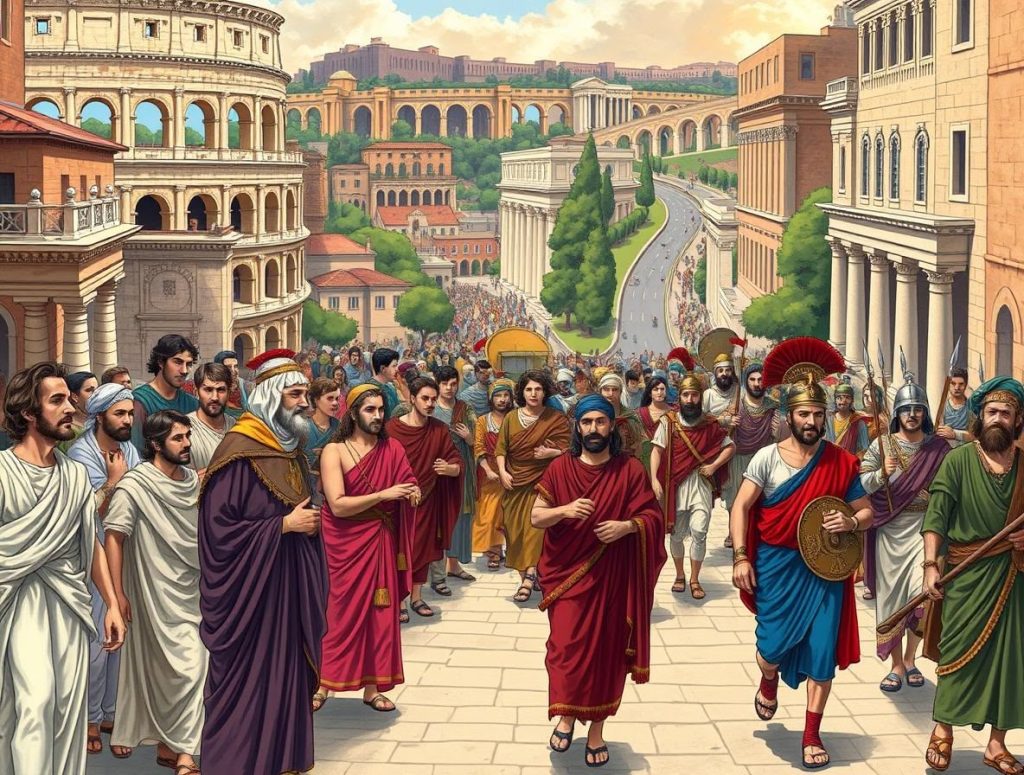
Social and Political Significance of Names in Roman Society
Roman names served as powerful indicators of social status and citizenship rights. Your name immediately revealed your place within the complex hierarchies of Roman society. The nomen, representing the gens or clan, connected individuals to their ancestral lineage, signaling noble heritage or plebeian origins. Families with well-known nomina commanded respect and influence, shaping political alliances and social opportunities.
Citizenship was a critical distinction in Rome, and names often marked these legal rights. Only citizens bore the full tria nomina; non-citizens, slaves, and freedmen had different naming patterns that clearly indicated their status. Holding a recognized Roman name implied access to legal protections, voting privileges, and eligibility for public office.
Names also acted as markers of identity within Rome’s intricate social fabric:
- Political affiliations: Certain nomina were associated with powerful political families whose influence shaped governance.
- Military achievements: Cognomina could commemorate personal valor or victorious campaigns.
- Social mobility: Freedmen adopting their former masters’ names demonstrated new citizenship status while retaining links to their past.
The naming system functioned as a living record of an individual’s heritage, rank, and role within Roman society. This embedded social information made names indispensable tools for asserting identity and navigating public life.
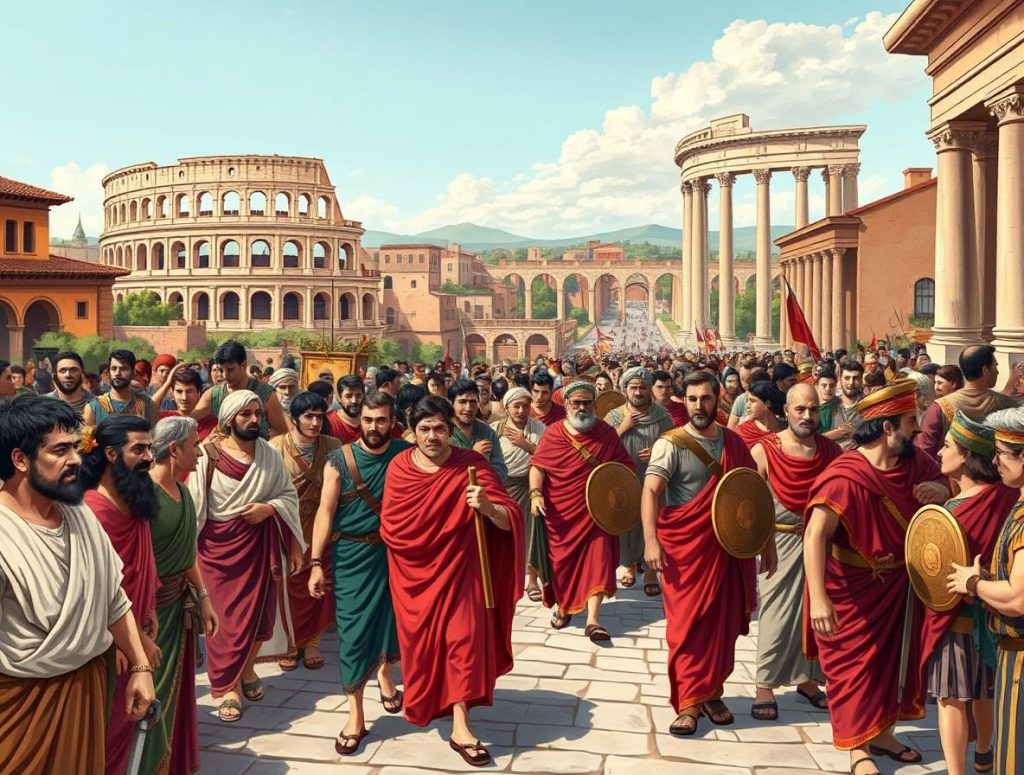
Evolution and Decline of Roman Naming Conventions Over Centuries
The evolution of Roman names spans from the Republic era’s relative simplicity to the Empire’s elaborate naming customs. During the Republic, the tria nomina system was firmly established, emphasizing clear identification through praenomen, nomen, and cognomen. As Rome expanded its territorial reach and social complexity increased, so did the naming conventions.
1. Increasing complexity under the Empire
Under the Empire, multiple cognomina became common as aristocratic families sought to display lineage, honors, and political connections. Emperors and senators often bore long strings of names reflecting adoption, alliances, or imperial favor.
2. Decline after empire fall
The collapse of Western Roman authority in the 5th century AD triggered a simplification in naming practices. The detailed tria nomina system lost relevance amid shifting power structures and cultural changes.
3. Transition toward single names
In medieval Italy and broader Europe, people increasingly adopted single names or simple combinations instead of the traditional Roman three-part structure. This shift aligned with emerging feudal societies where local identity mattered more than distant clan connections.
4. Medieval naming influences
While simplified, medieval names retained echoes of Roman heritage—many European surnames trace back to Roman nomina or cognomina forms.
5. Enduring influence on modern European naming systems
Contemporary Western naming conventions still reflect Roman roots in their use of given names plus family surnames. Abbreviations, patronymics, and inherited surnames can all be traced back to these ancient practices.
Roman naming conventions demonstrate a dynamic history shaped by social shifts and political transformations. Their legacy continues to shape how you understand personal identity in modern Europe. This legacy is not just confined to naming conventions but extends to various aspects of Western civilization as highlighted in our exploration of The Legacy of Ancient Rome.
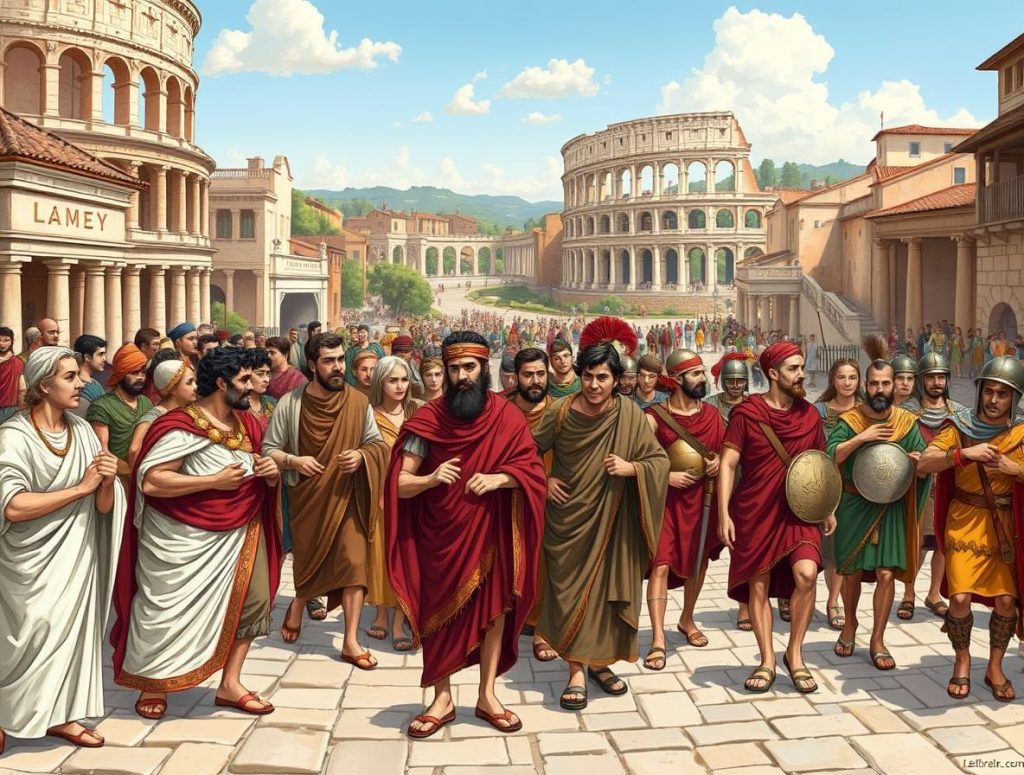
The influence of Roman culture is profound and enduring, shaping our governance systems, legal principles as seen in The Enduring Influence of the Corpus Juris Civilis on Modern Law, and even philosophical thoughts as explored in The Rise of Stoicism in Rome. Furthermore, the military might that shaped an empire is detailed in our study on The Roman Army.
The legacy of ancient Rome extends far beyond its historical timeline, influencing various aspects of modern society. For instance, Roman Law, which originated around 753 BCE, has played a crucial role in shaping modern legal systems. Its principles are still relevant in various legal systems today, making it essential for understanding the foundations of contemporary laws.
Moreover, Roman engineering also left a lasting impact on the world. Their innovative techniques not only ensured effective governance and cultural exchange but also served as a foundation for contemporary infrastructure systems. The significance of these engineering feats lies in their capacity to connect distant regions, a testament to the advanced understanding of engineering that the Romans possessed.

